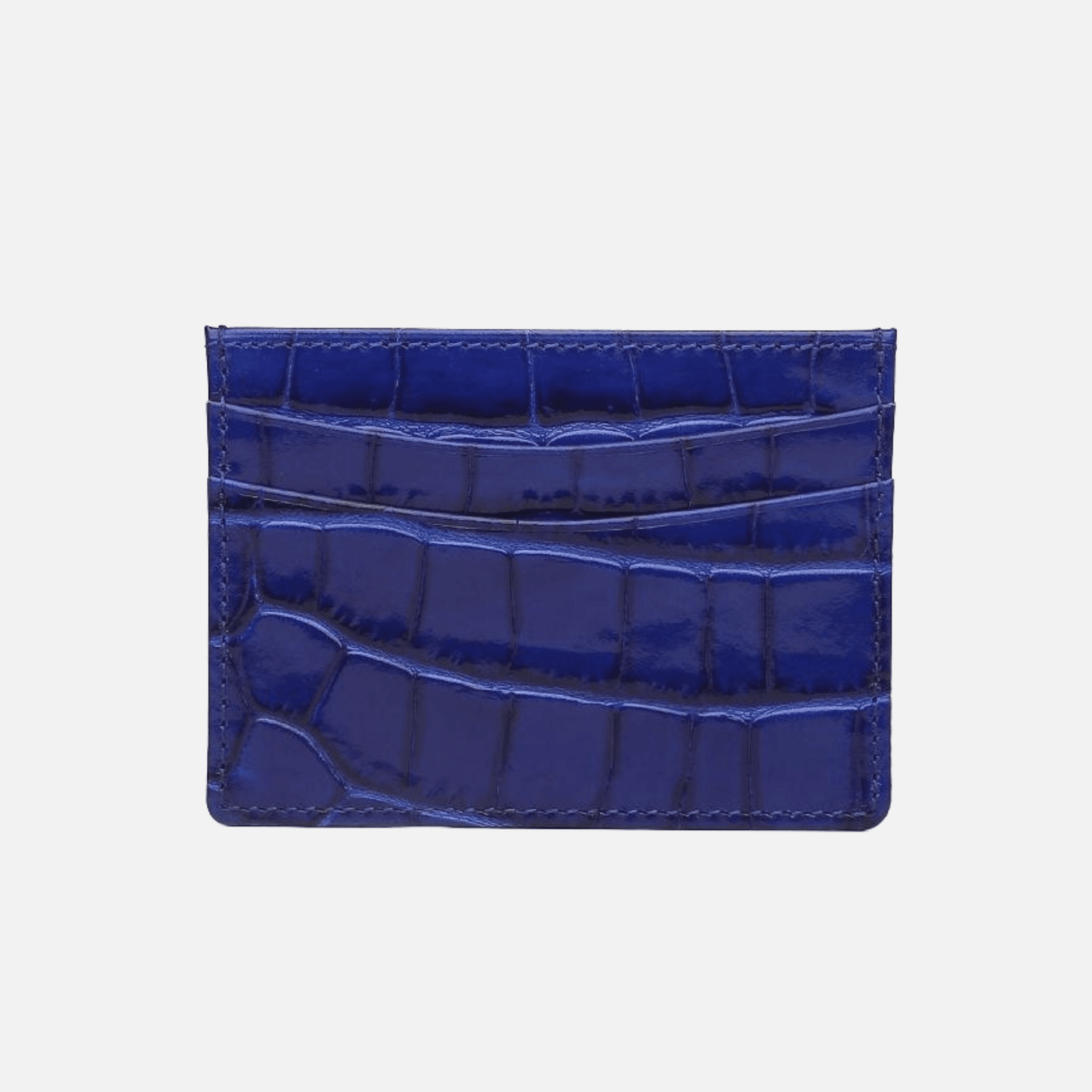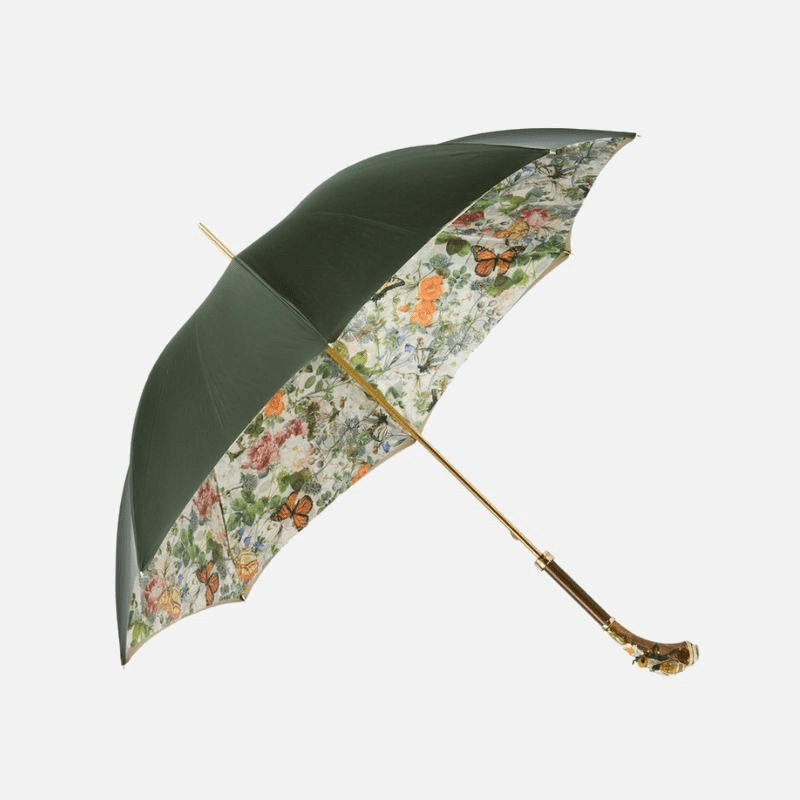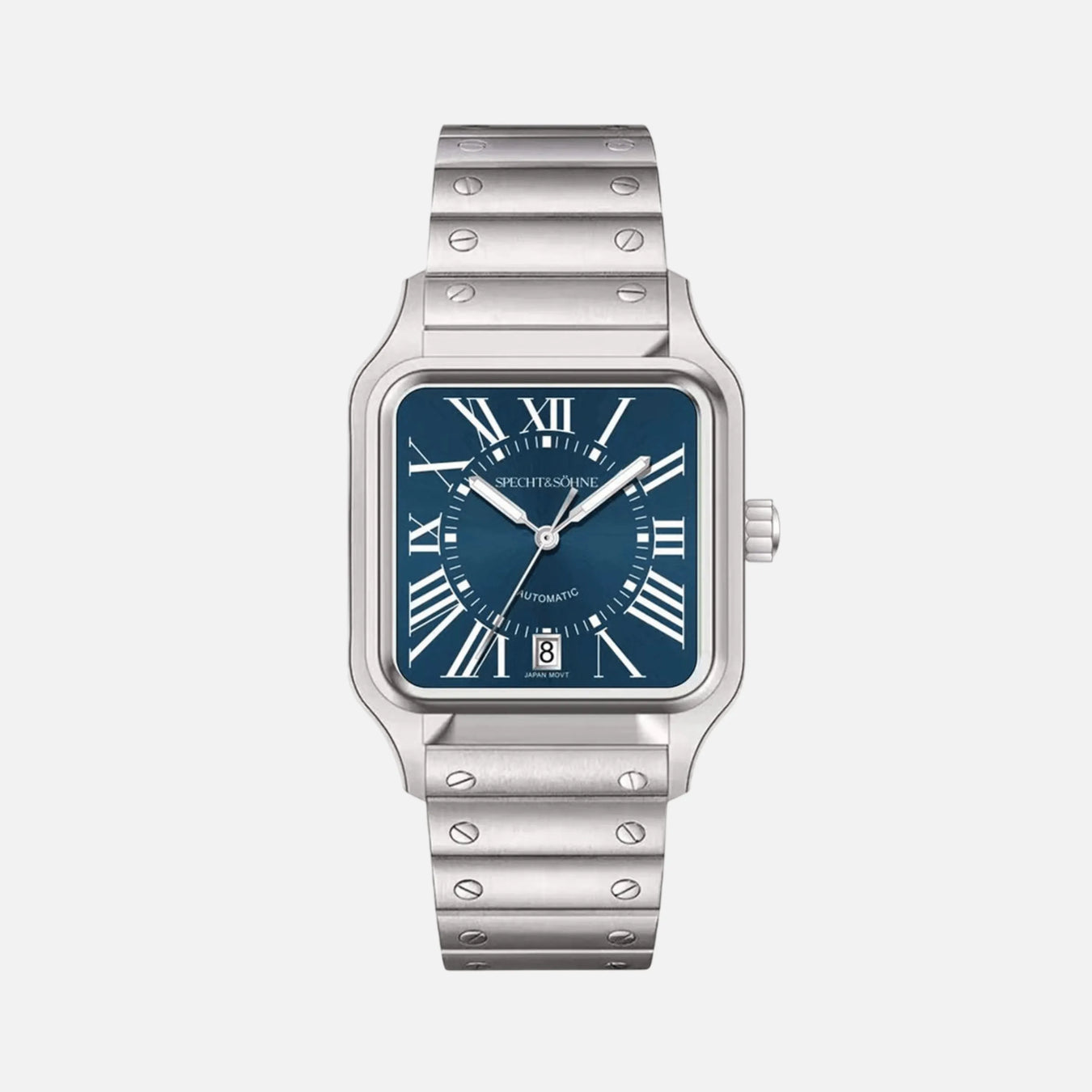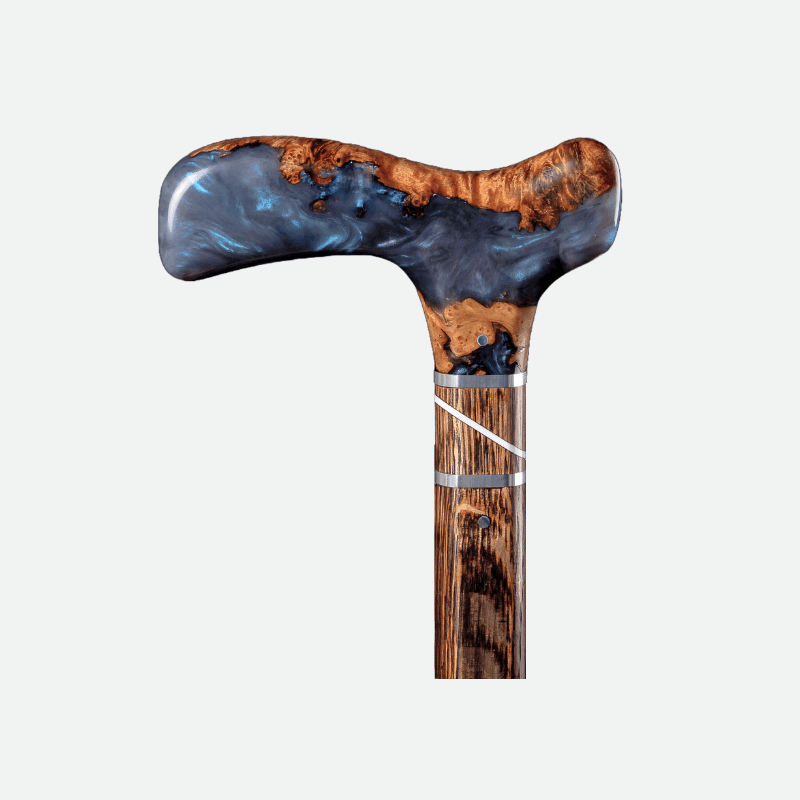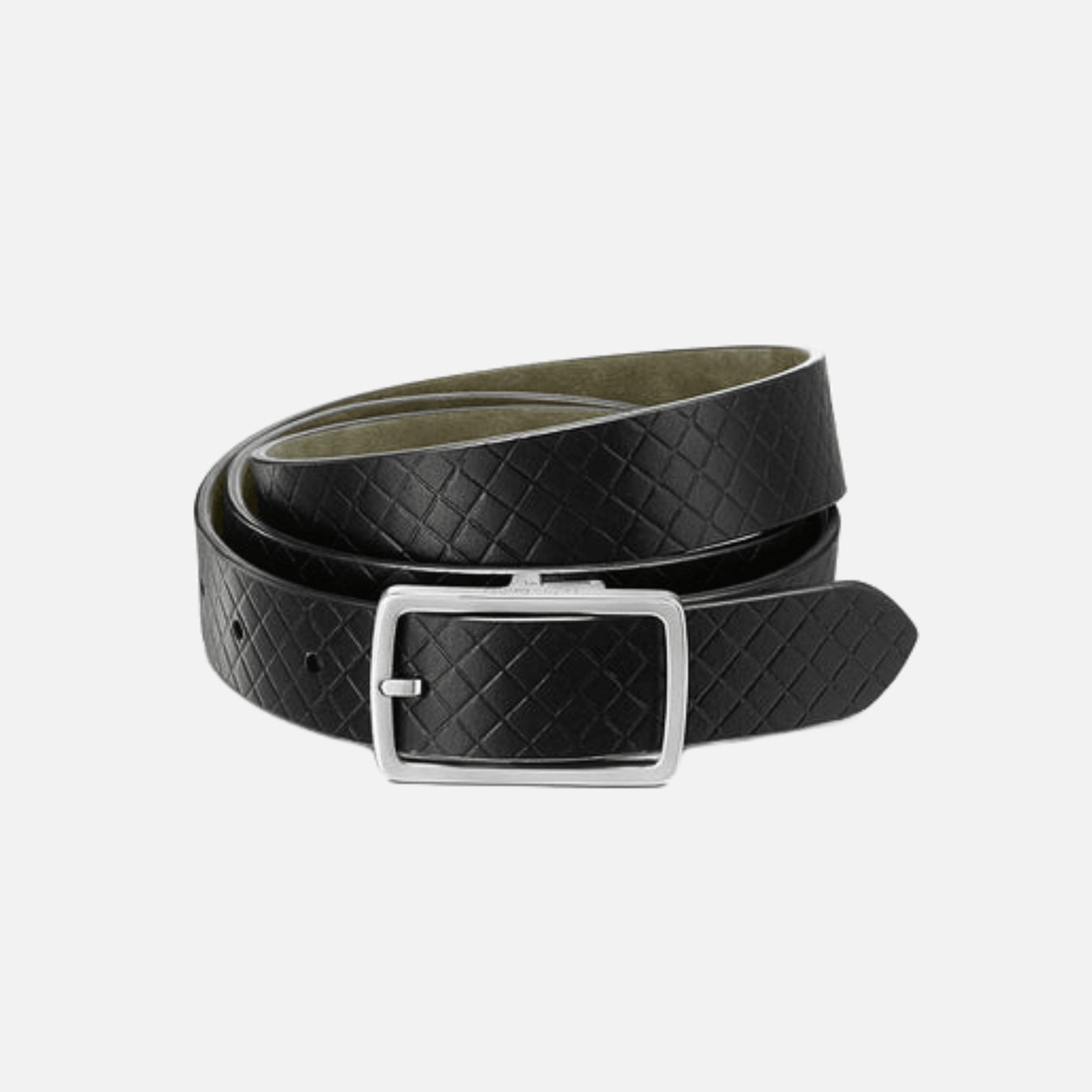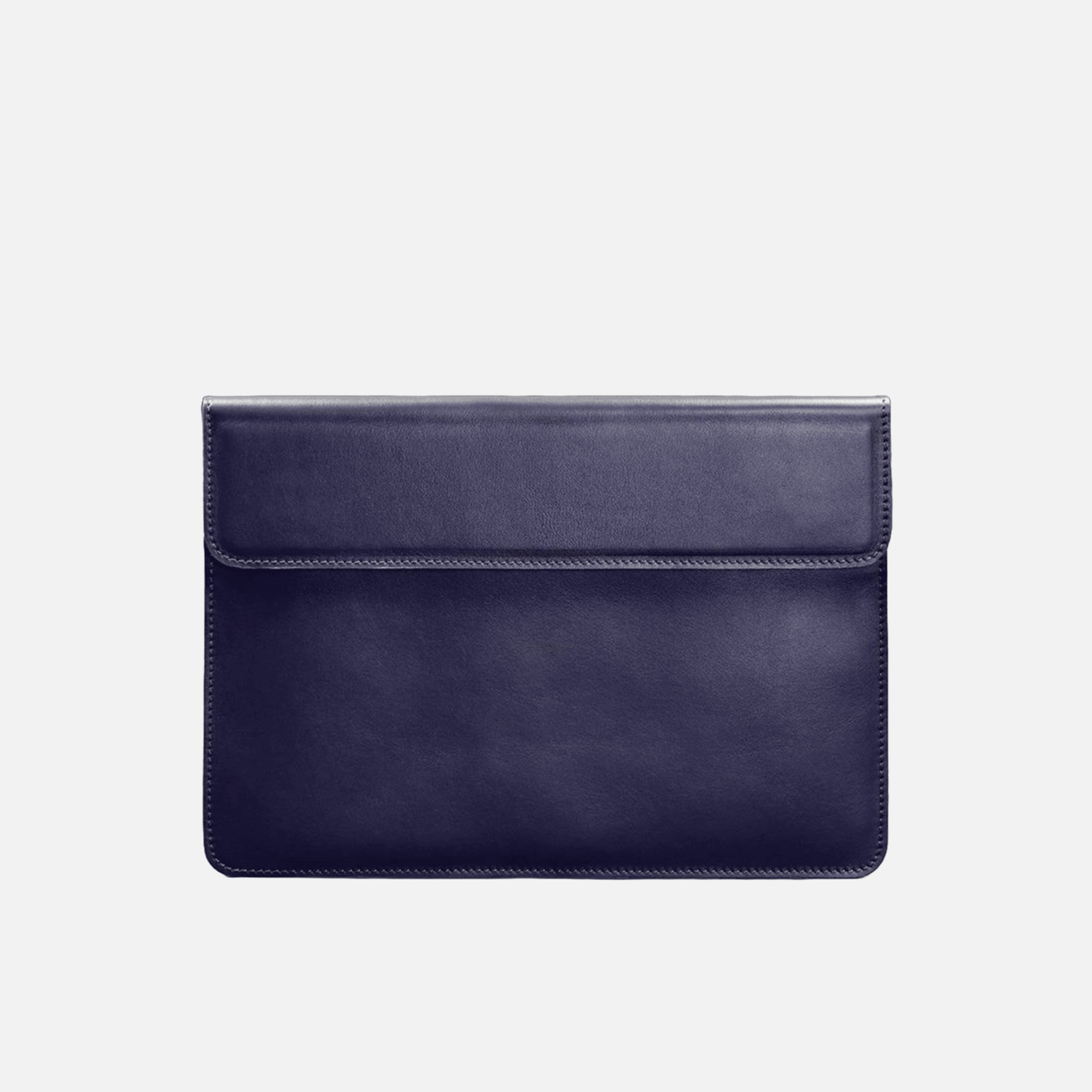Finding the Right Walking Cane for Balance: A Shopper's Guide
Introduction to Walking Canes and Their Importance for Balance
Walking canes have long been an essential tool for individuals seeking added stability and balance in their daily lives. Traditionally considered as mere aids for the elderly and those with physical limitations, the perception of walking canes has transformed over time. Nowadays, they are also seen as a reflection of style, encompassing a blend of functionality and aesthetics.
A walking cane provides support by redistributing weight from a weak or less stable leg, aiding those who contend with chronic conditions, injuries, or balance disorders. It can help increase the base of support, thereby enhancing stability and reducing the risk of falls. Furthermore, the use of a cane can alleviate joint pain by reducing the load on lower body joints like knees and hips.
The market is replete with options catering to diverse needs and preferences. Among the frequently asked questions (FAQ) by purchasers is what features to look for in a cane that ensures optimal balance. To support contemporary needs, 5 modern design trends in walking canes have emerged, each focusing on enhanced mobility, comfort, and style:
- Ergonomic Designs: Canes are now being crafted with contours that fit more naturally in individual hands, reducing strain and providing a comfortable grip.
- Lightweight Materials: Aluminum and carbon fiber options offer sturdiness without the extra weight, making canes easier to handle.
- Adjustable Height: Many canes come with adjustable shafts to accommodate different user heights and posture requirements.
- Multi-tip Bases: For additional stability, variations include 3⁄4 inch rubber tips and even quadruped bases.
- Artistic and Custom Pieces: Handmade walking canes are gaining popularity, whether fashioned from luxury woods for a set of large wooden chess pieces or designed as beautiful chess pieces to serve as a gift for dad or a loved one.
Balancing support and elegance, customers have the opportunity to select a walking cane that is not only functional but also personal, reflecting their style and enhancing their mobility with confidence.
Assessing Your Personal Needs: Factors to Consider Before Buying a Walking Cane
When shopping for a walking cane to enhance mobility, it’s crucial to take a personal inventory of needs. These factors will influence the type of cane that will best serve an individual’s purposes:
Height and Weight: Canes must correspond to an individual’s height for proper balance and support. Additionally, the cane’s weight capacity should be adequate for the user’s body weight.
Grip Comfort and Material: The handle should be comfortable and ergonomic to prevent hand fatigue and ensure a secure grip. Materials such as foam, rubber, or contoured wood can affect grip comfort.
Cane Tip Stability: The stability of a walking cane is often determined by the tip. A 3⁄4 inch rubber tip or other specialized walking cane tips can reduce slip and increase traction.
Adjustability: Some canes offer height adjustability, an essential feature for finding the perfect fit. Users should consider whether a fixed or adjustable cane best suits their needs.
Lifestyle and Usage: How often and where the cane will be used is important. For outdoor use, a more robust cane might be necessary, whereas for indoor use, a lighter cane may suffice.
Design and Aesthetics: While functionality is paramount, the design should not be overlooked. An individual might prefer 5 modern design trends in walking canes or a walking cane that reflects personal style—like a set of large wooden chess pieces, luxury chess pieces, or beautiful chess pieces that could make a unique gift for dad.
Materials and Durability: Durability is directly related to the materials from which the cane is made. Aluminum, carbon fiber, and hardwood are popular options, with many individuals preferring handmade canes for their craftsmanship and durability.
By thoroughly evaluating these aspects, customers can ensure they select a walking cane that offers the right balance of support, safety, and personal expression. Each aspect contributes to the practicality of the cane and its ability to enhance the user’s mobility and independence.
Types of Walking Canes: A Comparative Analysis
When seeking the right walking cane for balance, consumers are faced with an array of choices, each suited to different needs and aesthetic preferences. Evaluating the various types of canes is crucial to ensure enhanced mobility and comfort. Here, we provide a comparative analysis of the different types of walking canes available on the market.
Standard Straight Canes: These canes are the most common type and typically have a simple, straight design with a curved or T-shaped handle. They often come with a 3⁄4 inch rubber tip to prevent slipping.
Quad Canes: Equipped with a four-legged base, quad canes offer more stability than straight canes. These are ideal for those who require additional support and balance.
Folding Canes: For those who value convenience alongside support, folding canes can be collapsed and easily stored. They merge practicality with support, perfect for the active individual who is always on the go.
Seat Canes: Featuring a built-in seat, these canes are a dual-purpose tool that provides a portable seating option when a rest is needed during long walks.
Walking Sticks: More a traditional accessory than a mobility aid, walking sticks can vary greatly in design, from a set of large wooden chess pieces that function as luxury chess pieces, to beautiful handcrafted options that could be a perfect gift for dad.
Adjustable Canes: These canes offer versatility with height adjustment features, ensuring users can customize the cane to their specific needs.
Offset Canes: These have a curved neck that places the user’s weight directly over the cane’s shaft, providing better balance and weight distribution.
Canes with Accessories: Some modern design trends include canes equipped with lights, storage compartments, or even smartphone holders, enhancing functionality for a user’s lifestyle.
In the quest for optimal balance and stability, it is imperative to consider an individual’s unique requirements when selecting a cane. Whether favoring handmade walking canes for their bespoke quality or modern canes with the latest accessories for enhanced functionality, the key is to find a blend of comfort, stability, support, and personal style.
Material Matters: Choosing the Right Cane Construction for Durability and Comfort
When searching for the ideal walking cane to aid balance, the construction material is a crucial consideration that impacts both durability and comfort. Common materials include aluminum, wood, carbon fiber, and even reinforced plastic. Each has distinct qualities and benefits:
Aluminum canes are lightweight and adjustable, often featuring a telescopic design. They are robust and resist corrosion, making them suitable for frequent use. Despite their strength, they offer some flexibility for shock absorption.
Wooden canes boast traditional aesthetics and natural appeal. Popular woods like maple, pine, or the heavier ebony are shaped into sturdy canes, with some artisans crafting beautiful chess pieces-like designs, turning them into luxury items that double as a gift for dad or any person valuing handmade artistry. Wooden canes tend to lack adjustable height options but are known for longevity and a solid feel under weight.
Carbon fiber canes represent cutting-edge technology in cane construction. They are incredibly light and strong, providing an excellent option for those seeking durability without the bulk. The sleek, modern design trends in walking canes often incorporate carbon fiber for enhanced mobility.
Reinforced plastics offer an economical option while maintaining a good degree of sturdiness. They’re less common but can be suitable for temporary use or as a backup cane.
To ensure walking comfort, canes may be equipped with 3⁄4 inch rubber tips. These walking stick tips are essential for providing traction and stability, accessing FAQs can guide users in replacing these tips when needed.
For added customization and grip comfort, consider the handle material as well. Foam, rubber, or even gel handles can alleviate pressure on the hands and joints during extended use.
While shopping, factor in both the aesthetic appeal and the practical application of the cane. Whether opting for a set of large wooden chess pieces turned cane or a sleek aluminum model, the right choice in material will ensure your cane is a reliable companion that complements your lifestyle and mobility needs.
Handle Designs: Ergonomics and Grip Options for Stability
When selecting a walking cane for balance, handle design is a critical factor that directly impacts user comfort and stability. An ergonomically designed handle can significantly reduce hand fatigue and prevent the discomfort that may occur during extended use. Grip options vary widely and cater to personal preference and specific mobility needs.
Some popular handle designs include:
Fritz Handles: Designed for users with arthritis, the Fritz handle has a straight grip that eases stress on the hand and forearm.
Derby Handles: A classic choice, the Derby handle offers a comfortable curve that fits well in the palm, suitable for everyday use.
Palm Grip Handles: These are molded to fit the shape of either the right or left hand, thus providing a secure grip for those requiring more support.
Offset Handles: The offset design aligns the user’s weight over the cane’s shaft, aiding in balance and reducing wrist strain.
T-Handles: Simple yet functional, T-Handles can offer easy grip but less wrist support compared to ergonomic designs.
Advanced options also include adjustable grips, which enable users to fine-tune the handle’s positioning for individual comfort. High-quality walking canes might also incorporate technology or innovation into their handles, aligning with 5 modern design trends in walking canes for enhanced mobility.
Moreover, stability can be further enhanced with the addition of 3⁄4 inch rubber tips for walking stick walking canes tips. These tips provide better traction on various surfaces, reducing the risk of slips or falls.
For those seeking a unique, personalized touch, handmade handles are available and can range from a set of large wooden chess pieces luxury chess pieces beautiful chess pieces gift for dad, offering both functional support and an aesthetically pleasing design.
In conclusion, when investing in a walking cane, consider the handle carefully, taking into account the ergonomic fit and grip options that will best support balance and ease of use.
Adjustability and Customization: Finding a Cane to Match Your Height and Posture
When searching for the perfect walking cane, considering one’s individual height and posture is crucial for achieving optimal balance and comfort. Adjustability and customization are key features that cater to these personal needs, ensuring that the cane serves as a true extension of one’s mobility.
Height Adjustability: A proper cane should align with the user’s wrist when their arm is relaxed at their side. Many walking canes offer height adjustability, typically featuring a push-button mechanism that allows for a tailored fit. This feature ensures that users of any height can find a cane that positions their body correctly, preventing strain on the back and shoulders.
Cane Customization: Personal preference and style play a significant role in cane selection. With the emergence of 5 modern design trends in walking canes for enhanced mobility, individuals can choose from a range of materials, colors, and patterns that reflect their personality and lifestyle. Luxury options, such as a set of large wooden chess pieces, can even serve as beautiful chess pieces gifts for dad, showcasing exquisite craftsmanship and elegance in cane design.
Ergonomic Grips: Ergonomically designed grips cater to the user’s hand shape and size, ensuring comfort during prolonged use. These tailored features can alleviate pressure on the joints and aid in maintaining a natural posture.
Cane Tips: The type of tip on a walking cane is also customizable, with different tips providing varying levels of traction and stability. For instance, a 3 4 inch rubber tip for walking stick walking canes is a standard size that offers good surface grip, while larger tips may provide more stability but less precision.
Through these customizable options, users can find a walking cane that not only provides functional support but also conveys a sense of individuality and style. Handmade options further enhance the personal touch, as they can be crafted to the specific needs and preferences of the user. By prioritizing adjustability and customization when choosing a cane, individuals can ensure they have a reliable assistant for their daily activities.
Base Variations: Single Tip versus Quad Tip Canes
When exploring the current walking cane market for improved mobility solutions, shoppers will encounter a diverse range of options including both single tip and quad tip canes. These two common base variations each provide distinct advantages that cater to specific stability needs.
Single tip canes, often capped with a 3⁄4 inch rubber tip, are a traditional choice and suffice for those who require minimal additional support. They’re lightweight, easy to maneuver, and are commonly seen incorporated into 5 modern design trends of walking canes, showcasing both functionality and style. For instance, a single tip cane made from a large wooden chess piece illustrates an inventive blend of a luxury chess piece and mobility aid—a beautiful chess piece gift for dad that serves a dual purpose.
In contrast, quad tip canes are designed with four small feet that expand the base of support, offering enhanced stability for users. These canes are particularly beneficial for those who have significant balance challenges or are recovering from an injury. The wider base ensures the cane stays upright when not in use, reducing the risk of falls. Furthermore, the quad tip design provides a sturdier grip on uneven surfaces, making it a solid choice for outdoor use.
Choosing between single tip and quad tip canes may come down to personal mobility requirements, the intended use environment, and aesthetic preferences. Aesthetically, quad tip canes may lack the streamlined look of their single-tip counterparts, but for many users, the trade-off for increased safety is worthwhile.
When opting for handcrafted options, it’s worth noting that bespoke designs can cater to both single and quad tip preferences, giving customers the freedom to combine handmade charm with their specific stability needs.
Added Features: Accessories and Technology Enhancements for Balance Canes
When navigating through the numerous options available for balance canes, shoppers often inquire about the latest features that enhance the utility and comfort of their mobility aids. Advancements in accessories and technology play a significant role in the modernization of walking canes, aligning with the 5 modern design trends aimed at enhancing mobility.
Ergonomic Handles: Designed for comfort and grip, ergonomic handles reduce strain on the wrist and joints. Many are tailored to fit the contours of the hand, demonstrating handmade craftsmanship and attention to detail.
Adjustable Shafts: The ability to adjust the height of a walking cane is crucial for proper balance and posture. Most canes come with simple mechanisms allowing for quick and easy height adjustments.
Smart Canes: Incorporating technology, smart canes may feature built-in sensors, navigation assistance, and even fall alert systems. This high-tech approach supports users with additional safety measures.
3⁄4 Inch Rubber Tips: It is imperative to consider walking canes with 3⁄4 inch rubber tips, as they offer enhanced traction and stability on various surfaces, reducing the risk of slipping.
Multipurpose Attachments: Some canes include attachments that transform them into useful tools, such as a set of large wooden chess pieces, luxury chess pieces, or beautiful chess pieces, making for a thoughtful gift for dad or any chess enthusiast.
LED Lights: For visibility and safety during night-time walks, LED light accessories can be attached to illuminate the path ahead.
Customization Options: Personalization has become a significant trend. Users can now choose from luxury materials and designs, or even opt for custom-engraved or hand-painted models, making the walking cane an extension of one’s personal style.
By adding these features and innovative enhancements, a balance cane becomes more than just a walking aid – it embodies convenience, technology, and style, enlivening the daily lives of those who depend on it for support and balance.
Where to Shop: Online Retailers vs. Brick-and-Mortar Stores
When searching for the perfect walking cane for balance, shoppers are often faced with a choice: purchase from an online retailer or visit a brick-and-mortar store. Both avenues have distinct advantages and considerations that should be weighed according to individual needs.
Online Retailers:
- Convenience: Shopping online allows buyers to peruse a wide range of options from the comfort of their home.
- Variety: E-commerce platforms typically offer a diverse array of products, ranging from 5 modern design trends in walking canes for enhanced mobility to specialized accessories like 3⁄4 inch rubber tips for walking stick and cane tips.
- Comparison: Customers can easily compare prices, read reviews, and view ratings which aids in making an informed decision.
- Personalization: Many online stores provide options for personal touches, such as engravings or the choice of large wooden chess pieces, catering to those seeking luxury chess pieces and beautiful chess pieces as a gift for dad.
- Handmade and Custom Options: Unique or handmade items, such as handmade walking canes, are readily available online.
Brick-and-Mortar Stores:
- Physical Inspection: Shoppers can handle the canes, gauging the feel and the weight, ensuring a proper fit.
- Immediate Availability: Purchases can be taken home the same day, which is ideal for those requiring a cane without delay.
- Expert Advice: Staff can provide immediate assistance and insights, answering FAQ in-person and helping to select the suitable cane.
- Support Local Businesses: Buying from local stores supports the community and can be a rewarding experience.
- No Shipping Costs: In-store purchases eliminate shipping fees, which is advantageous for bulkier items like a set of large wooden chess pieces.
Both shopping venues provide valuable options. Whether opting for the convenience of online shopping or the tactile assurance of a physical store, the priority remains finding a reliable and comfortable walking cane that improves balance and mobility.
Understanding Price Ranges and Brand Reputation
When navigating the varied landscape of walking canes, consumers encounter a broad spectrum of price ranges and brands, each vying for attention and loyalty. On one end, cost-effective options that cater to basic needs without frills are available, while on the other, luxurious canes, akin to a set of large wooden chess pieces, stand as extravagant emblems of style and status— beautiful chess pieces in the realm of mobility aids, which could serve as a unique gift for dad or anyone valuing artisan craftsmanship.
Within this range, reputation plays a vital role. Brands with longstanding market presence often command higher prices due to perceived reliability and quality. Handmade walking canes, for example, not only echo current design trends but are also appreciated for their individuality and meticulous attention to detail. These products not only assist with balance but also align with the 5 modern design trends in walking canes for enhanced mobility, pairing function with fashion.
Conversely, walking canes fitted with universal features like the 3⁄4 inch rubber tips assure buyers of compatibility and easy replacement. Price-conscious consumers might opt for these walking sticks, as the cane tips are an essential aspect for safe mobility and are widely available.
Costs can also vary depending on the materials used. Traditional options often include aluminum, offering durability at a moderate price point, while luxury brands may offer exotic woods or incorporate carbon fiber for lightweight strength, driving the price upward.
In conclusion, a well-informed shopper considers both price range and brand reputation, recognizing that the true value lies in personal satisfaction and the assurance of safety and comfort during mobility.
Maintaining Your Walking Cane for Long-Term Use
To ensure that your walking cane continues to provide optimal support and maintains its aesthetic appeal, a regimen of care and upkeep is essential. Whether you’ve selected a cane for its 5 modern design trends for enhanced mobility or for its resemblance to a set of large wooden chess pieces as a luxury gift for Dad, the same principles for maintenance apply.
First, routinely inspect your cane, especially if it features 3⁄4 inch rubber tips or other walking cane tips designed for safety and traction. Replace these tips when they show signs of wear; compromised tips can reduce stability and increase the risk of falls.
Keep the cane clean by wiping it down with a damp cloth to remove dirt and debris. For a handmade cane or those with beautiful, intricate designs, use gentle cleaning products that do not strip the wood or other materials of their natural oils and finishes.
Regular lubrication of the cane’s moving parts, such as any adjustable height mechanisms, is also advisable. Use an appropriate lubricant as specified by the cane’s manufacturer to ensure smooth operation and prevent rust or corrosion.
If your cane has a wooden shaft, occasional polishing can preserve its luster. However, avoid over-polishing, as it can lead to a build-up that makes the cane slippery to handle.
Lastly, store your walking cane properly when not in use. Avoid leaning it against walls where it might fall or placing it in damp areas that could cause wood warping or metal deterioration.
With conscientious care, your walking cane will continue to be a reliable tool for balance and mobility while maintaining its stylish appearance for years to come.
Walking Technique Tips: How to Properly Use Your Cane for Maximum Balance
When navigating the vast selection of walking canes, it’s critical to understand not only the product specifications but also how to properly use a cane for maximum balance. Here are some technique tips to keep in mind:
Choose the Proper Height: For optimal support, the top of the cane should reach the crease in your wrist when your arms are at your sides. This ensures the cane is an extension of your body, assisting with balance rather than causing strain.
Hold the Cane on the Opposite Side of Your Weaker Leg: This provides support for your weaker side without directly placing stress on it. As you step with your weaker leg, move the cane simultaneously to maintain an even distribution of weight.
Align the Cane with the Pinky Toe: Position the base of the cane in line with your small toe. This placement ensures adequate support and encourages a more natural walking pattern.
Apply Light Pressure: Grip the handle firmly but not tightly. Your fingers should be relaxed enough to feel the cane’s response to the ground but secure enough to employ it for balance.
Replace the Tip Regularly: Walking canes tips, such as the 3⁄4 inch rubber tips, tend to wear out. Regularly check and replace these tips to maintain the cane’s grip and stability.
Adapt to Modern Designs: Embrace 5 modern design trends in walking canes for enhanced mobility. These designs often integrate ergonomic handles and adjustable features that can aid in achieving better balance.
Engage with Luxury and Handmade Elements: Sometimes, a cane is more than just a tool for mobility; it can also be an expression of personal style. Consider luxury chess pieces or handmade walking canes made from fine materials that make a statement, like a set of large wooden chess pieces which can be a beautiful chess pieces gift for dad.
Remember, the use of a walking cane should alleviate balance concerns while promoting independence. It may take time to adapt to these techniques, but with practice, your cane will become a natural extension of your body, restoring confidence in your movements.
User Reviews and Testimonials: Learning from Others’ Experiences
When navigating the wide range of walking canes available, user reviews and testimonials become invaluable resources. They offer insights into real-world usage and highlight whether a particular cane delivers on balance and support. Reviews may cover how well a 3 4 inch rubber tip maintains grip, or whether certain modern design trends in walking canes genuinely enhance mobility or are just visually appealing.
A disabled individual might extol the virtues of a walking stick with an ergonomic handle, sharing how it reduces hand fatigue during prolonged use. Meanwhile, a hiking enthusiast could detail how a cane with a retractable spike performs on different terrains. For those interested in aesthetics as well as functionality, testimonials about a set of large wooden chess pieces doubling as luxury chess pieces gifted for a dad, may dive into the craft’s excellence and dual utility.
- Users share experiences with different handle designs and materials, advocating for what works best for their grip and comfort.
- Accounts of how well canes withstand regular use and the durability of accessories like 3 4 inch rubber tips provide real-world assessments of a product’s longevity.
- The benefit of handmade walking canes, often described in testimonials, is highlighted by users noting personalized attention to detail and customization options.
- Real-life applications, such as the use of walking canes in various settings – from the rugged outdoors to formal events – are discussed, providing shoppers with a spectrum of scenarios.
- Reviews might also comment on the weight and portability of canes, factors crucial to users with specific strength and travel preferences.
Evaluating user reviews and testimonials allows potential buyers to anticipate the compatibility of a walking cane with their lifestyle and balance requirements, making them essential tools in the decision-making process.
Navigating Insurance and Medicare: Understanding Coverage for Mobility Aids
When shopping for the right walking cane to enhance balance and mobility, it’s important to consider how insurance and Medicare can play into the financial side of your decision. Understanding the parameters of your coverage is crucial in making an informed choice.
Insurance policies vary greatly, and coverage for mobility aids such as walking canes will depend on the specifics of an individual’s plan. Typically, private insurance may cover a portion or the total cost of a walking cane if it is deemed medically necessary by a healthcare provider. Consumers should review their policy details or directly contact their insurance provider for guidance on coverage, deductibles, and copayments related to mobility aids.
Medicare, a federal health insurance program for people who are 65 or older, certain younger people with disabilities, and people with End-Stage Renal Disease, also provides coverage for mobility aids, but with specific conditions. Under Medicare Part B (Medical Insurance), walking canes are categorized as durable medical equipment (DME). To qualify, the cane must be prescribed by a Medicare-enrolled physician as necessary for the individual’s health condition.
To navigate Medicare coverage effectively:
- Ensure the equipment supplier is Medicare-approved.
- Verify the prescription includes a detailed explanation of the need for the cane.
- Keep in mind that Medicare will pay 80% of the Medicare-approved amount after the Part B deductible is met, and the individual is responsible for the remaining 20%.
Individuals may have additional insurance such as Medigap or Medicare Advantage Plans, which might offer extra coverage. It’s essential to contact these plans directly for more detailed information about mobility aid coverage.
In conclusion, whether an individual seeks a handmade walking cane, a set boasting modern design trends, or one with specific features like 3⁄4 inch rubber tips for their walking stick, understanding insurance and Medicare coverage can ease the financial burden and help focus on selecting the right mobility aid based on quality and functionality.
Conclusion: Making an Informed Decision on the Best Walking Cane for Balance
Choosing the right walking cane for balance is a critical decision that affects one’s mobility and independence. Individuals must weigh the benefits of various features against their specific needs to find an option that enhances stability and compliments their lifestyle. The process may include exploring the latest 5 modern design trends in walking canes to identify a model that is not only functional but aesthetically pleasing.
A cane with a 3⁄4 inch rubber tip is often recommended for its non-slip properties, ensuring a secure grip on different terrains. This feature is especially important as it provides the user with confidence in their cane’s ability to support their weight and maintain balance.
It’s also vital to select a cane that reflects personal style and comfort. Those with a penchant for tactile beauty may appreciate the warmth and craftsmanship of a set of large wooden chess pieces; likewise, consider a walking cane echoing these qualities—something handcrafted, possibly serving as a beautiful chess piece-like gift for Dad.
Incorporating handmade elements into a cane design can signify attention to detail and quality, which might translate into better ergonomic support and durability. Selecting a walking cane is like an FAQ for daily life: what are my needs, and how can this tool address them effectively?
Before making a final decision, consider:
- Can the cane be adjusted to the correct height?
- Does the handle fit comfortably in your hand?
- Is the base appropriate for the environments you frequently navigate?
By taking the time to thoroughly investigate these options and ensuring the chosen cane meets your needs, you can significantly enhance your walking experience. Remember, the best walking cane for balance is one that offers security, comfort, and matches your individual requirements.

